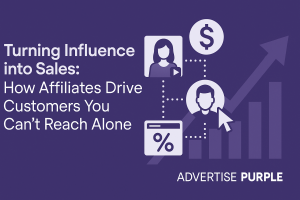
Share
Brands are opting for performance based marketing as a cost-effective model to reach new audiences and focus on driving conversions. Over the past few years, performance marketing has become more reliant on technology and data analytics in order to build recommendations that are sure to drive performance. With the rise of digital marketing channels and the proliferation of data, companies can now leverage these data insights to guide their brand strategy in unprecedented ways. When incorporating patterns from data into effective marketing, there’s a lot of behind the scenes analysis and testing you should be doing that’s easy to overlook if you’re going into it without prior experience. But to get started here are the most important analyses you should be doing to make the best marketing decisions from your data.
Real-Time Data Analytics
First and foremost, you want to make sure your data is up to date at all times. Making decisions for today based on data from last month isn’t going to help you make relevant strategy moves. Having data that’s collected and analyzed each day means you’re able to adjust your marketing strategy according to the most up to date industry trends and market conditions that are impacting your target audience.
Predictive Analytics
Predictive analytics uses algorithms and machine learning to analyze historical data and make predictions about future events. In performance marketing, predictive analytics is used to predict which users are most likely to convert, which products or services are most likely to be purchased, and which marketing channels are most effective. You can use this to make data-backed decisions about where to allocate resources and which direction to take your branding moving forward.
Attribution Modeling
In marketing, doing an attribution model distributes the relative weight of conversions based on their origin marketing channel. Through this you can see which channels are the most effective in getting the user to complete the desired action. By using attribution modeling, companies can optimize their marketing spend by focusing heavily on the most effective channels.
A/B Testing
The concept of A/B testing is pretty straightforward but putting it into practice can seem daunting. In the most simple terms A/B testing is comparing the effectiveness of two different versions of the same message. In marketing we tend to use A/B testing for most decisions because we want to make sure we are using the best possible marketing materials. So when you are taking these data insights and thinking through adjustments to strategy, content, your social media or website, make sure you are coming up with multiple test versions for your audience to interact with and then analyze their engagement to see which version to move forward with.
Use Data to Create Personalized Customer Journeys
Personalization is a key element of performance marketing. With data analytics, companies can analyze user behavior and preferences to create curated experiences catered to each individual user. By collecting data on how users interact with a website or app, companies can determine which products or services are most relevant to each user and offer custom recommendations. Creating a sense of unique interaction between the brand and the user tends to drive higher conversions than mass marketing.
Data analytics in marketing is undeniable now. You can’t stay on par with competitors without integrating data insights into your branding and strategy. Analytics should be your guiding light. As you’re developing your data analytics plan, keep coming back to this article and make sure you’re setting the right framework, taking account of all streams of data and making note of the analyses you want to conduct and how you’ll use what you discover to make changes in your current marketing.





